IndoDairy Newsletter #1
Making silage using elephant grass in Cisarua
Rizky Febrianggia, Village Level Researcher (VLR) IndoDairy Cisarua
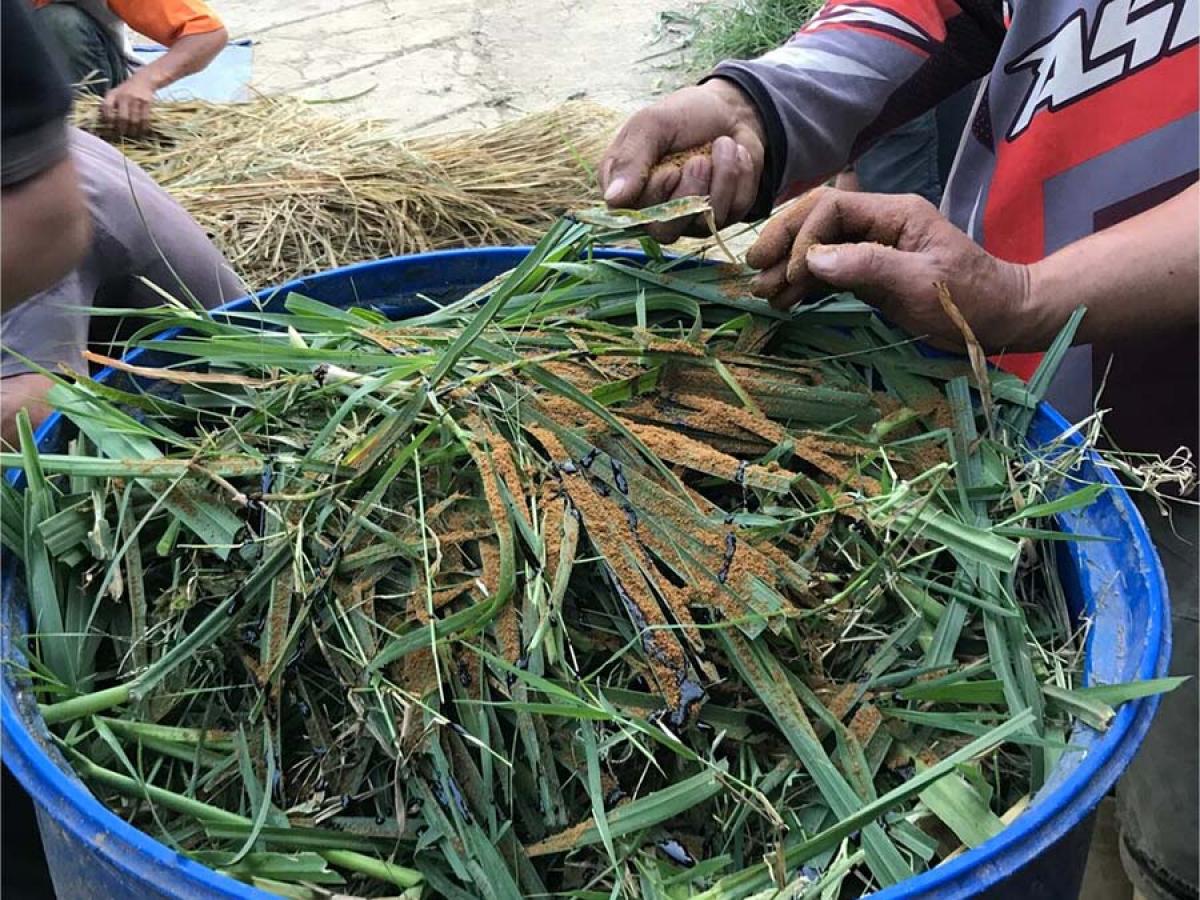
Farmers in Cisarua, Bogor made silage of Elephant Grass using molasses and probiotics.
Silage is a good feed alternative that can be fed during the dry season and made by dairy farmers. Silage can be easy to make if good quality surplus forage is available. A topic on feeding and nutrition, including silage making was covered during a recent discussion group meeting in Cisarua.
The topic on silage making attracted much attention because farmers face a shortage of forage during the dry season. This results in farmers having to look for forages over a greater distance and is more time consuming. In addition to limited availability, the quality of forage is often poorer in the dry season, causing a decrease in milk production.
After participating in the group meeting, two farmers Pak Ujang Firman and Pak Adom (the group chairman and secretary) were inspired to make silage assisted by Rizky, the group facilitator in Cisarua. When making silage, they also involved other farmers to participate so they could understand the benefits of conserving silage. Silage was made from Elephant grass which is readily grown in West Java and if cut at the right stage is high in energy and protein. Large plastic containers and covers were used to to store the silage.
According to Pak Adom, feeding silage to his cows reduced the burden of sourcing forages in the dry season and also saw an increase in milk production of two litres per day per cow. The silage was also very palatable so cows were able to eat more and left less residual grass.
Participation in farmer discussion groups (DG) through the IndoDairy Project in KUD Giri Tani, Cisarua has been beneficial to discuss a range of topics, including nutrition. Three topics have been covered so far and farmers have felt they are able to raise their issues experienced on their farms. In addition, the discussion activities are also a means for KUD management to communicate regularly with their farmer members.
Weight tape: a farm management tool
Rio Muhammad Fauzan, Village Level Researcher (VLR) IndoDairy Cianjur
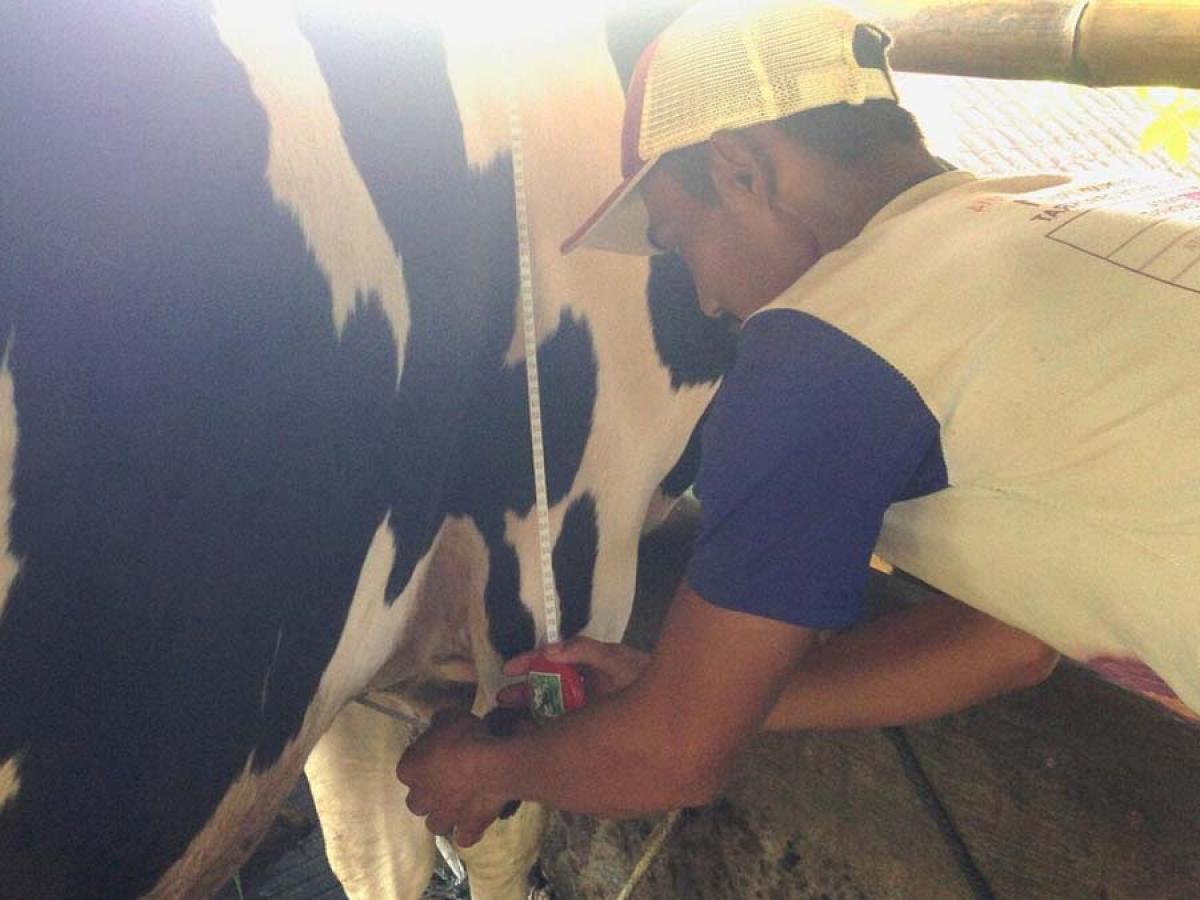
Pak Wahyudin, Farmer in Cianjur, monitored his heifer’s body weight before Artificial Insemination (AI).
Measuring dairy cattle growth and performance for farmers in KPS Cianjur is now becoming easier than ever. Since involvement in discussion groups (DGs), farmers are now equipped to measure cow body weight using weight tapes provided to them.
Pak Wahyudin, a farmer aged 32 years old has been a member of KUD since 2008 and has three lactating cows. He is always willing to go the to extra mile for his farm which has led him to join a discussion group as part of the IndoDairy project which offered capacity building opportunities. The topics of focus include reproduction, nutrition, animal health, calf management and business management. As part of nutrition and calf management the importance of monitoring body weight was discussed.
Understanding cow body weight and targets is vital because it influences milk production and animal health. Through the IndoDairy groups body weight for calves at weaning, heifers at joining and later at calving was discussed. To measure growth of the dairy herd, use of a weigh tape was demonstrated and is a simply tool to help farmers reach target weights at different stages of growth.
Pak Wahyudin sees this benefit and is now taking regular measurements of his cows to support decision making on farm. This was shown when his heifer was underweight before artificial insemination (AI) so he was able to evaluate and improve the diet and housing to increase weight gain.
Currently Pak Wahyudin and other DG members have started using the weigh tape. This will be beneficial to support them for achieving ideal cow body weight and optimal farm business performance.
Record keeping, a key to understanding farm profit
Attin Syahnurattin, Village Level Researcher (VLR) IndoDairy KPS Bogor
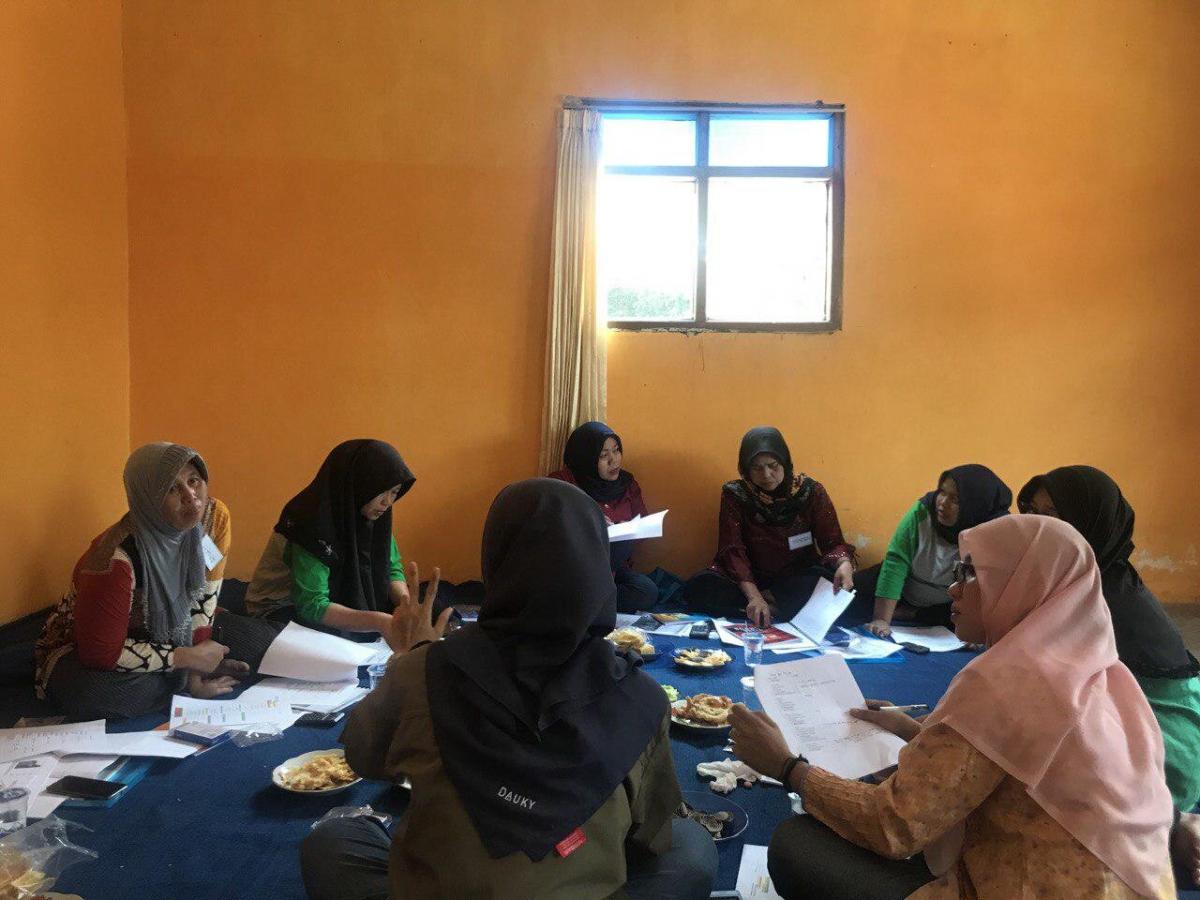
Ibu Kokom and other WDG members discussed monthly costs from their dairy farms.
A women's discussion group (WDG) under the IndoDairy Project was established for women farmers or wives of farmers in Cijeruk, Bogor. This was a new activity to cater more specifically to the needs of women in dairy farming as a place to share and discuss their challenges.
WDG activities began by planning and choosing several topics relevant to the women based on the local conditions of dairy farming in Cijeruk. One of the topics chosen was farm business management and how to calculate farm profit. Recording keeping was discussed as one of the most important actions in the step of calculating profit.
One member, Bu Kokom, was very enthusiastic when obtaining materials about calculating profit. Before joining the discussion group, Ms. Kokom was collecting some farm records, but it was only limited to the amount of concentrate she fed the cows.
Bu Kokom acknowledged, "For the farm I only recorded milk production and the amount of concentrate and I didn't know about the usefulness of other records to calculate profit. After joining the WDG discussion I learned how to calculate profit from understanding sources of income and also the production costs incurred”.
"Great dairy farmers are those who make money (profit) by implementing the best technical skills on the farm", she continued recalling the information discussed during the group.
Surf Field Mastitis Test (SFMT): an inexpensive tool for detecting subclinical mastitis
Elis Diah Sri Rahayu, Village Level Researcher (VLR) IndoDairy Garut
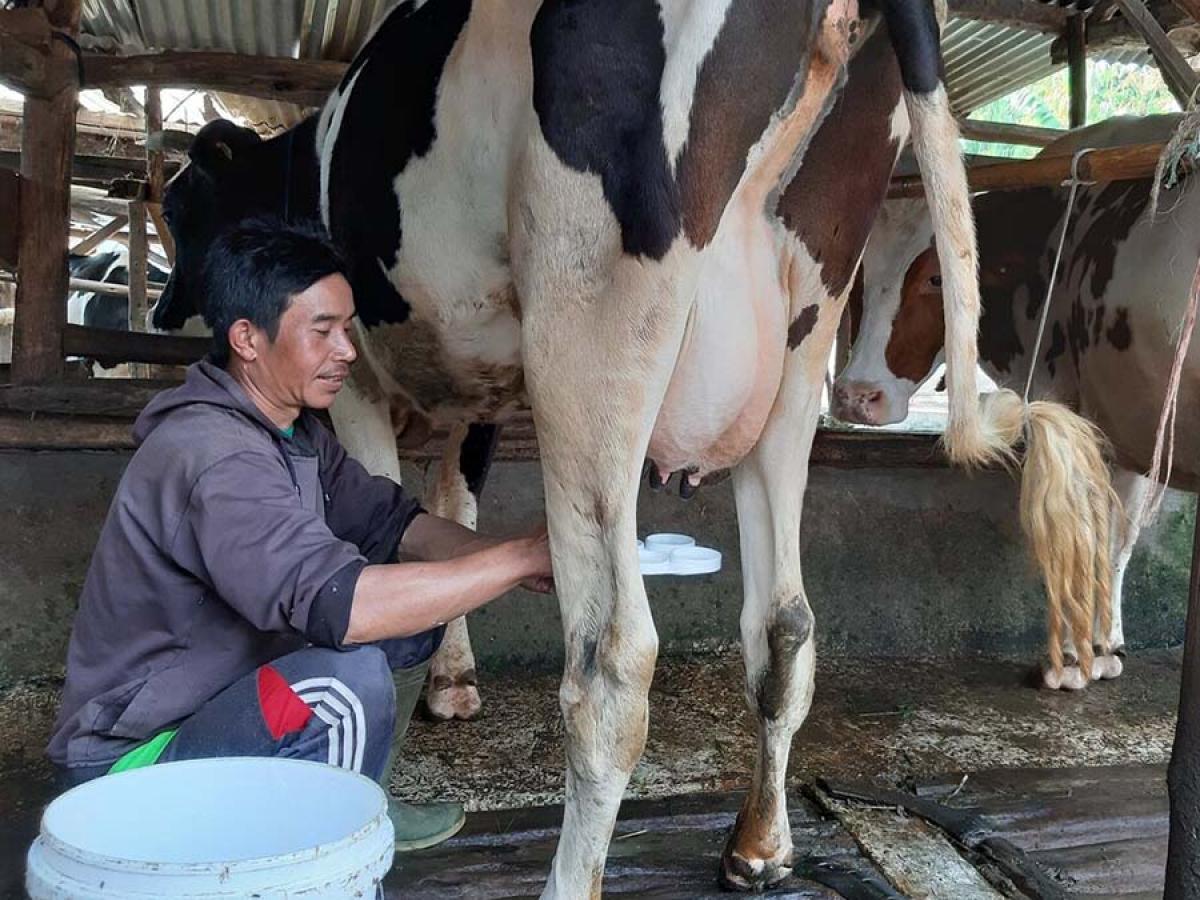
Pak Jaja, farmer in Garut, conducted SFMT to detect sub-clinical mastitis
Pak Jaja has been a dairy farmer for about 20 years in Cikajang, Garut. Since 1998, Pak Jaja helped his parents run the dairy business, then in 2001 he continued his own business independently and has 3 dairy cows. Pak Jaja gained knowledge of farming from his family and some short training lessons provided by dairy cooperative officers in his area but has had no formal training.
During his time as a farmer Pak Jaja has had to manage the impact of mastitis. One time he saw a dramatic decrease in milk production for one lactating cow caused by one damaged teat from mastitis in the udder.
Mastitis is an expensive cost to the dairy industry. Mastitis results from the growth of bacteria in the udder and is often classified in two forms: Clinical and Sub-clincial (hidden) Mastitis.
Before clinical mastitis was detected, Pak Jaja did not see any visible signs or noticeable changes in the udder or to the milk such as clots until later when there was a sudden drop in milk production from the infected teat. Unfortunately by then it was too late and the cow had to be culled because of poor production.
After covering the topic on milk quality and mastitis in the IndoDairy discussion group Pak Jaja was shown how to detect subclinical mastitis using a simple method called Surf Field Mastitis Test (SFMT).
SFMT is similar to the California Mastitis Test but is cheaper and more accessible as it uses household detergent as the reagent. The SFMT is an effective method for early detection of sub-clinical mastitis.
Because of its ease of application, Pak Jaja has now been carrying out routine SFMT at least once a month to detect the subclinical mastitis among his cows to help manage and prevent mastitis on his farm.
KPBS Pangalengan adopts IndoDairy extension method
Muhammad Fauzi, Village Level Researcher (VLR) IndoDairy Pangalengan
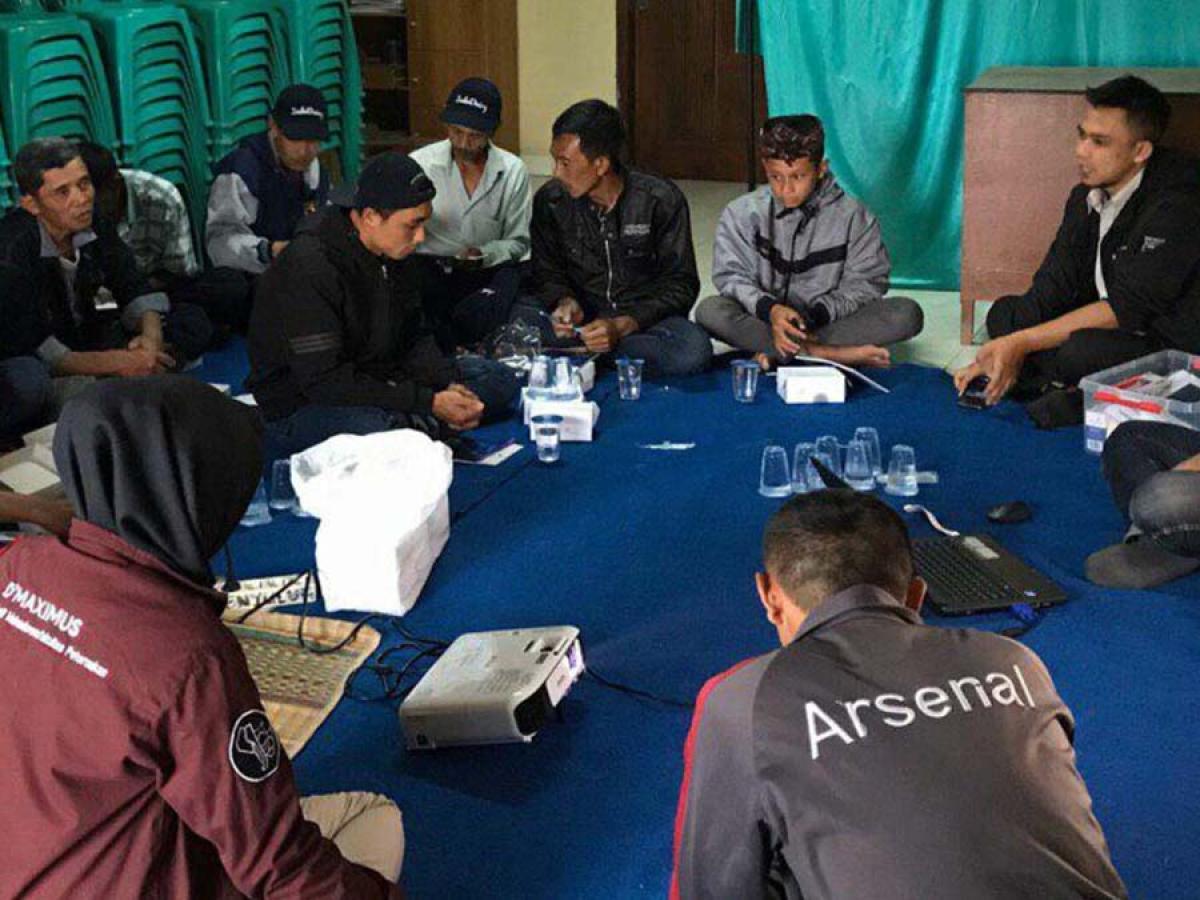
Pak Yan Yan, an extension officer in Pangalengan, delivered a topic about calf management to his farmers.
The calf management material presented as part of the IndoDairy project attracted the attention of the extension staff at KPBS Pangalengan. As a result six extension staff from the KUD used the IndoDairy extension materials which was further extended to an additional 2000 other farmers in the region.
The first topic presented at the Pangalengan Discussion Group (DG) was calf management, common practices that can be improved. Good management practices for calves, includes giving 4 liters of colostrum within the first 6-12 hours after birth, feeding concentrate up to 1 kg at point of weaning and giving separate drinking water from feed and milk. Calf pens should be kept clean with good ventilation and away from drafts.
Managing a newborn calf requires special care, accuracy, and perseverance. Dairy farms in Indonesia are mostly small scale and use traditional methods that generally result in low performance of calves.
Poor husbandry of calves, especially female calves will lead to poor performance of heifers, which result in less productive cows. Good handling and feeding of calves at an early age is very important for producing quality replacement stock on the farm. In addition, calves also become valuable assets that can be sold directly when farmers need cash money.
The information on calf management was well received from the KUD and KPBS extension team hopes that IndoDairy can provide further knowledge and training through the project for the development of dairy farming in Pangalengan.
